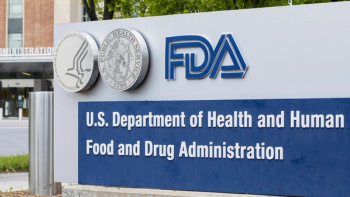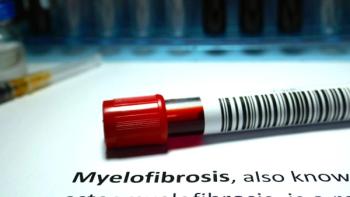
Despite Full Vaccinations, Patients With Cancer Who Develop Breakthrough COVID-19 Infections May Still be at Risk for Severe Outcomes
Patients with cancer who received two full vaccine doses but developed breakthrough COVID-19 infections afterwards had a 13% mortality rate as well as a high hospitalization risk, and therefore should maintain protective strategies, according to experts.
Patients with cancer who became ill with COVID-19 after vaccination against the infection — known as a breakthrough infection — developed substantial comorbidities and potentially severe or lethal infections.
“We should not be underestimating COVID-19 severity among vaccinated patients with cancer, and (want) to stress the need for strict precautions (e.g. social distancing, mask wearing) and related health measures (e.g. vaccination of close contacts, booster shot administration),” said Dr. Toni Choueiri, director of the Lank Center for Genitourinary Care at Dana-Farber Cancer Institute and a senior author on the report, in an interview with CURE®. “Now with omicron, with more transmissibility, we need to remain very vigilant. This variant seems to cause less severe disease but data in (patients with) cancer, at this time, is lacking.”
The data were collected from Nov. 1, 2020 to May 31, 2021 — before booster vaccine recommendations were released by the U.S. Centers for Disease Control and Prevention (CDC) for patients with cancer — and published in Annals of Oncology this week.
“I think our message is a little complex, because on the one hand, we are convinced by the science and everything that vaccines work, that it may take more than the two doses to get immunity,” said Dr. Jeremy Warner, director of the COVID-19 & Cancer Consortium Research Coordinating Center, an associate professor at Vanderbilt-Ingram Cancer Center and a senior author of the study, in an interview with CURE®. “Vaccines work, but at the same time, patients with cancer who do get COVID-19 do quite badly.”
Among 1,787 adult patients with cancer who contracted COVID-19, 1,656 (93%) were unvaccinated, 77 (4%) were partially vaccinated and 54 (3%) were fully vaccinated. Patients were considered fully vaccinated if they had received two doses of the BioNTech, Pfizer vaccine or Moderna, NIAD vaccine or one dose of the Johnson & Johnson vaccine. The last dose was completed long enough to be considered effective before breakthrough COVID-19 for them to be included in the fully vaccinated group.
The fully vaccinated patients had a median age of 65.5 years and were mostly female (65%) and non-Hispanic White (70%). Nineteen patients (35%) had hematologic malignancies.
There were 54 fully vaccinated patients who developed COVID-19, of which 35 (65%) were hospitalized, 10 (19%) were admitted to the ICU or required mechanical ventilation (MV), and seven (13%) died within 30 days. Rates were comparable among the unvaccinated population in the study.
There was an increased 30-day mortality associated with lymphopenia (a condition where patients have less lymphocytes than normal), comorbid conditions, worse ECOG performance status (which measures patients disease progression and effects on functioning) and worse baseline cancer status (where a patient’s disease was active and progressing or not active and not progressing). Lymphopenia is common among patients receiving anti-CD20 monoclonal antibodies or CAR-T cell treatments for hematologic malignancies.
“This is concerning — we did a lot of statistical analysis to try to make the population as comparable as possible to the rest of the patients that were reported at the same time, which were unvaccinated,” Warner said. “And I must emphasize that the vast majority of the reports that came into our registry during this six-month period were from unvaccinated individuals.”
Hospitalization rates did not differ significantly between groups, but were higher among all patients with lymphopenia, comorbid conditions, poor ECOG status and hematologic cancers.
The authors noted that because measures of immunity are not routinely collected in clinical care, the researchers do not know whether the patients with severe breakthrough cases had effective immune responses after vaccination —
“It’s important to note that many of the same factors that we identified prior to the availability of vaccination — age, comorbidities, performance status and progressing cancer — still seem to drive many of the bad outcomes,” Warner said.
Notably, 46% of the fully vaccinated patients had reduced levels of lymphocytes, which are the T-cells and B-cells responsible for immunological responses to viruses. The researchers also noted that patients who had received a corticosteroid treatment regimen were more susceptible to hospitalization.
Senior study author Dr. Dimitrios Farmakiotis, an infectious disease clinician at the Warren Alpert Medical School of Brown University in Providence, Rhode Island, pointed out that other studies have reported similar results of high mortality among fully vaccinated individuals among other immunocompromised patient populations like organ transplant recipients prior to third full or booster vaccine doses.
“These findings come at a time of concerns that immune escape mutants such as the omicron strain may emerge from chronically infected patients with weakened immune systems,” Farmakiotis said in a press release. “Thus, the immunosuppressed and their close contacts should be target groups for therapeutic and preventive interventions, including community-level outreach and educational efforts.”
The authors concluded their findings with the suggestion of a mitigation approach in which patients and their close contacts become fully vaccinated (with additional vaccine doses), and maintain social distancing and mask-wearing for the foreseeable future.
Warner suggested that patients try to start wearing fitted N95 masks if possible, or KN95/KF94 masks, and try to avoid purchasing counterfeit masks from vendors to ensure optimum effectiveness.
“I think the other thing is recognizing how contagious this omicron variant is — you know, people are comparing it to measles at this point,” he said. “And, you know, not going to social, open public spaces unless it's absolutely necessary. And I think that's always a good idea for anybody, but especially for patients who may not have adequate immunity or are at risk for other reasons.”
Patients can also feel hopeful about new treatments and pre- and post-exposure solutions coming out for high-risk individuals who are infected with COVID-19, Warner concluded.
“We did just want to put this out there as a word of caution. You know, people should still exercise their right to travel to see loved ones, but they should really just be careful if they can.”
For more news on cancer updates, research and education, don’t forget to





